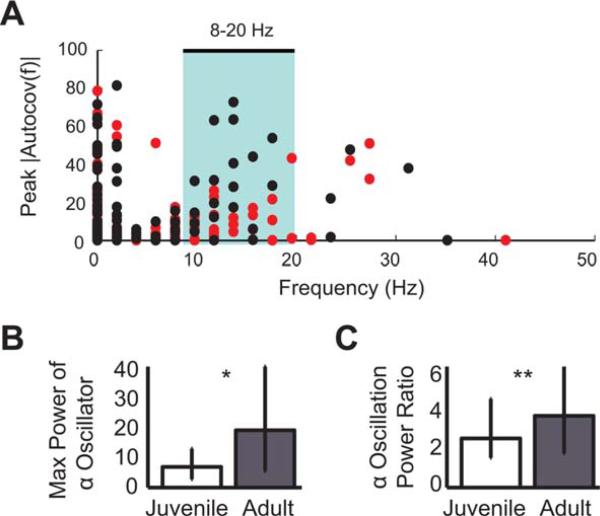Figure 3.
Oscillatory activity in the 8–20 Hz range was greater in adults than juveniles. (A) A scatter plot of autocovariance peak frequency versus power at the peak frequency. A subset of adult neurons (black) had higher power in the frequency range 8–20 Hz (θ/α/μ/β range, highlighted by cyan box) than any juvenile neurons (red). (B) The maximum power of autocovariance of α-oscillator neurons that had peak power 8–20 Hz was significantly greater in adults (Ns = 28, 21; *p < 0.012). (C) Power ratios (median power 8–20 Hz/median power 0– 200 Hz) for all other neurons were significantly greater in adults, indicating that oscillatory power in the a range disproportionately increases across the HVC network during development (Ns = 194, 206; **p < 0.0023). [Color figure can be viewed in the online issue, which is available at wileyonlinelibrary.com.]

